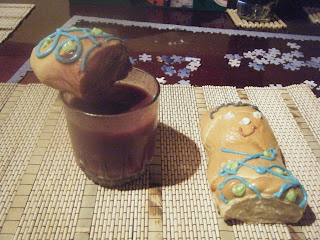 |
| Andean rock band Cocha Marka playing ive at Otavalo cemetery |
The day of the dead is celebrated on November 2nd, which this year was a Tuesday, in Ecuador November 3rd is an Independence day. This year the government gave Monday as ‘bridge’ public holiday which means most people have had a five day weekend. Consequently, everybody in Ecuador has gone away somewhere. We took the opportunity to come to Otavalo in the northern highlands. This town is famous for its indigenous textiles and its markets, but is also a good place to observe the customs of day of the dead.
The day that it is celebrated on is actually all souls day in the Catholic religion, and the day of the dead is likely an indigenous adaptation of this European religious custom. Christianity is big over here, and has been since the Spanish arrived with Columbus. However, it tends to be integrated with traditional local customs, particularly by the indigenous groups. An example of this is the Ecuadorian custom of eating guaguas de pan- little dolls made of bread, with colada morada- a think fruity drink that looks like blood and guts. The combination is reminiscent of the Catholic bread and wine – body and blood symbolism. This is likely an example of syncretism, the merging of religious belief systems to avoid conflict. It isn’t at all uncommon, and is for example why Easter in the UK is celebrated with eggs and bunny rabbits; these native customs were syncretised with Christianity when Pagan Europeans adopted that Middle Eastern religion.
 |
| Guaguas de pan, these are from a supermarket, better ones are sold by street vendors |
 |
| Guagua and colada morada |
I visited the cemetery in Otavalo on the day of the dead, and it was a struggle to get through the crowds to get there. The last few hundred yards of the route were lined with traders selling guaguas, fruit and other food. When I arrived the cemetery was packed and there was a stage set up for an Andean rock band to play. I bought a CD. There was a balloon seller and hundreds of families spending time at the family graves. It is quite a scene, but I coudn’t stay long as it felt something of an invasion of privacy, and being the only gringo there, I stood out as a gawky tourist. Nevertheless, I wasn’t the only one there who took photographs. Locals were doing that too, and I didn’t encounter any hostility.



No comments:
Post a Comment